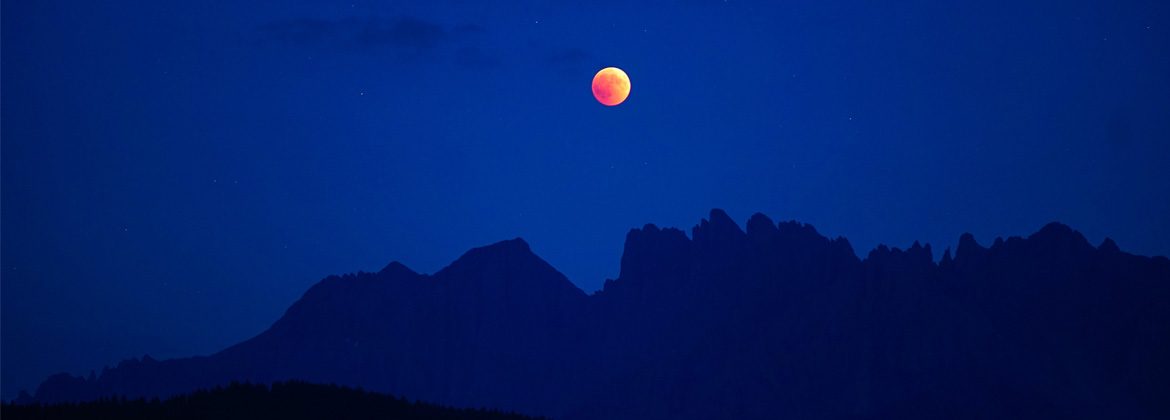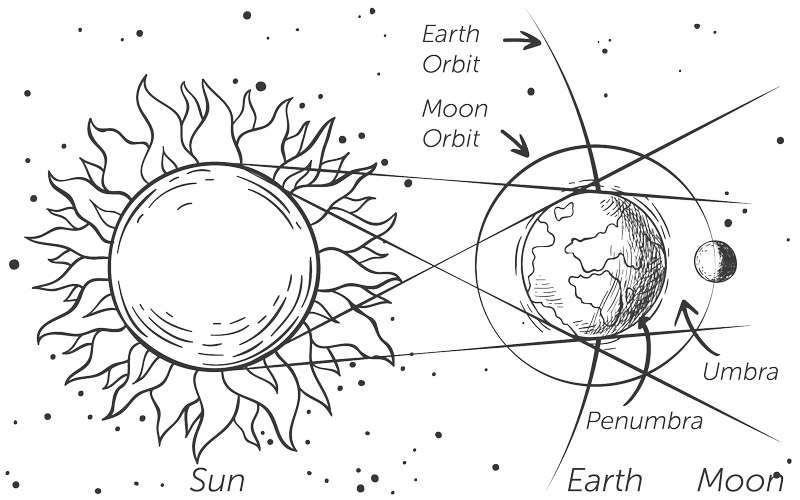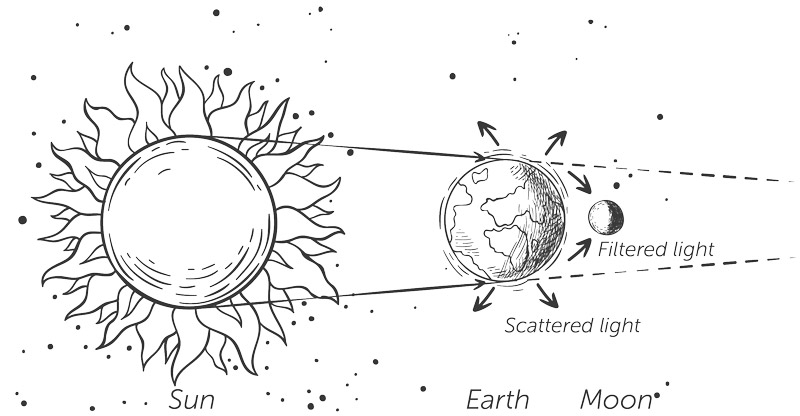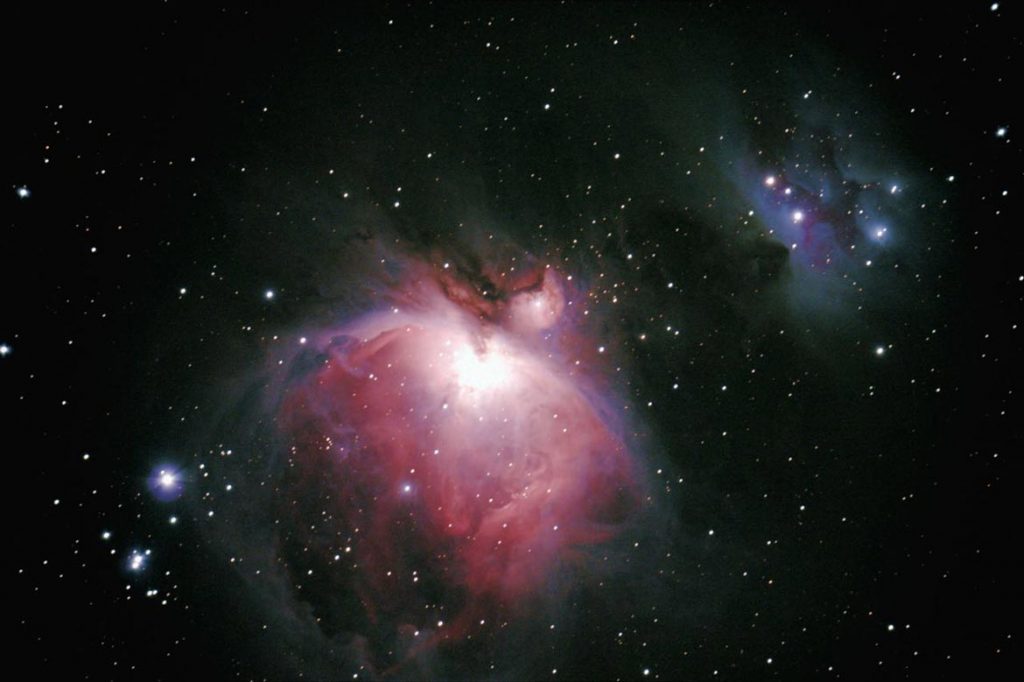Astronomical Ephemeris – November, 2022
Astronomical Ephemeris – November, 2022


The moon is gone! In ancient civilizations, the fact that the moon simply “disappeared” and then a reddish-orange ball appeared in the sky inspired myths and legends. With the evolution of science and technology, we discovered that it is a total lunar eclipse, a phenomenon that occurs because the Earth blocks the sunlight and casts a shadow on the moon while the three celestial bodies align. The event is featured in November’s astronomical ephemeris, and will take place on the 8th.
It can be seen from East Asia, Siberia, Oceania, New Zealand, Japan, Australia, North and Central America and part of eastern South America between 9:10 am (UTC) and 1:50 pm (UTC). The lunar eclipse is completely safe to observe with the naked eye, without the need for any kind of filter.

A lunar eclipse occurs when the Moon, Earth and Sun are positioned in a straight line, with the Earth between the two celestial bodies and the Moon in the shadow of the planet. For the phenomenon to happen, the Moon walks through a region called the “penumbra”, which is partially illuminated by the Sun. It is there that the reduction of its brightness begins. Then, the Moon approaches the “umbra”, which is the darkest part of the Earth’s shadow because it has no direct illumination from the Sun. In this way, little by little the Moon ceases to be visible until it is completely obscured.
The reddish-orange color is due to the fact that molecules in the Earth’s atmosphere scatter more short-wavelength light (e.g. yellow, green, blue) than long-wavelength light (e.g. orange and red). This process, which is responsible for turning the sunset red, is also responsible for turning the Moon’s characteristic reddish-orange color in total eclipses. However, the exact color can vary considerably in both hue and brightness.

Like eclipses, other celestial phenomena are a way for the universe to present us with a vast knowledge that is there, we still haven’t figured it out… just like the disappearance of the moon for ancient peoples.
Other observable astronomical events around the world
November 1 – Conjunction between the Moon and Saturn
Observable towards the geographic west, in the constellation Capricorn, in the first half of the night.
November 4 – Conjunction between the Moon and Jupiter
Observable crossing the sky from the east to the geographic west, in the constellation Pisces, from early evening to mid-dawn.
November 11 – Conjunction between the Moon and Mars
Observable crossing the sky from the east to the geographic west, in the constellation of Taurus, during dawn.
November 17 and 18 – Leonids Meteor Shower Peak
Active from November 6 to the 30, the Leonids meteor shower will have moments of greater activity on the 17 and 18, when it will produce an average of 15 fast meteors per hour (average of 72 km/s), bright and with long trails. The best time of observation is estimated to be just before dawn.
Leonids occur when the Earth passes through the stream of solid particles left behind by comet 55P/Temple-Tuttle – called the parent object. It is famous for producing massive storms every 33 years, the time it takes the comet to complete one orbit around the Sun. The name of this shower is due to its radiant (point from which meteors seem to emanate) being located in the constellation of Leo.
November 28 – Conjunction between the Moon and Saturn
Observable towards the geographic west, in the constellation Capricorn, in the first half of the night.
Know more
The phenomenon called “conjunction” occurs when the observer here on Earth has the apparent view that two or more celestial bodies are very close. This proximity between the celestial bodies, perceived by our eyes, without the help of equipment, is not real. They are actually very far apart.
November 1 – First Quarter
November 8 – Full Moon
November 16 – Last Quarter
November 23 – New Moon
November 30 – First Quarter
Sources: jpl.nasa.gov/calendar / solarsystem.nasa.gov / in-the-sky.org / Stellarium.org / earthsky.org / jpl.nasa.gov / IMO – International Meteor Organization – imo.net/resources/ calendar / AMS – American Meteor Society – amsmeteors.org/meteor-shower / eclipse.gsfc.nasa.gov / timeanddate.com/eclipse / mreclipse.com

The astronomical ephemeris are a monthly schedule prepared by the Astronomy Sector, which is one of
the 12 that make up the PRÓ-VIDA Laboratory Department. In the department, studies, research and scientific experiments related to various topics are developed, as well as field activities and lectures.

The astronomical ephemeris are a monthly schedule prepared by the Astronomy Sector, which is one of
the 12 that make up the PRÓ-VIDA Laboratory Department. In the department, studies, research and scientific experiments related to various topics are developed, as well as field activities and lectures.




